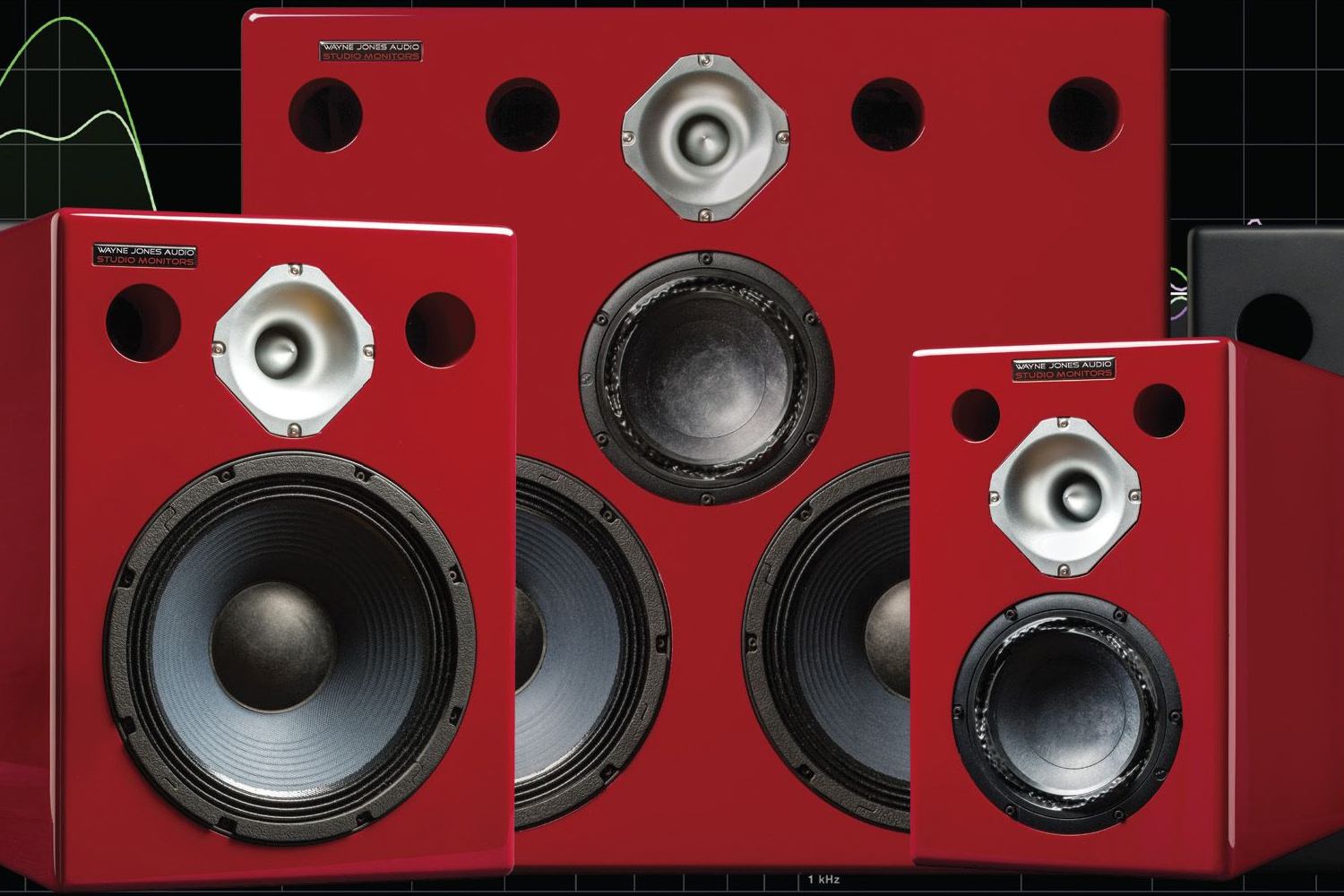Wayne Jones Audio, based in Melbourne, Victoria, are certainly ones for pushing the envelope.
It’s rather humbling when we see an Australian company being truly innovative within the pro audio realm – with a finger well and truly on the pulse of modern production workflow and boldly going where no one has gone before. This is no small feat (which shouldn’t come as a surprise), given the imperious levels of competition from some of the most well established and revered companies in the business, most notably spread across Europe and the USA. Those who try and inch their way onto the top shelf of the studio monitor market do so daringly, and just like a fine single malt, often age and experience sets the tone (and accompanying value); so a relatively new drop has to have something particularly special on offer to capture the attention of the at times, dare I say it, snobbish attitude of the pro audio kingdom.
Read up on all the latest features and columns here.
Wayne Jones Audio, based in Melbourne, Victoria are certainly ones for pushing the envelope, and well, be I so bold as to say, lead the pack when it comes to studio monitor design, technological innovation and integration – making significant partnerships that, to put it simply, have revolutionised this section of the industry. When I had the pleasure of talking to the man himself Wayne Jones recently, I quickly discovered that for Wayne, his philosophy is simple – “to reproduce accurately what goes in”. It’s with this in mind that the beginnings of Wayne Jones Audio make that much more sense.
As a renowned session bass player, Wayne had been looking for a bass cabinet that could more accurately reproduce the sound of his instrument to his ears, and with an introduction to Loranaz Audio, a 10” woofer (sporting a eucalyptus pulp Kevlar impregnated cone) was made that ticked all the right boxes. The bottom end reproduction of this custom driver was so tight and accurate, Wayne’s first solo record was mixed on a pair of these bass cabinets, with superb results. What started as a bass players’ search for low end reproduction perfection, sparked the idea that with some tweaking, this 10” driver could be well suited as the basis of a fantastic studio monitor.
After establishing the solid 10” bass driver with Lorantz Audio, the installation of a FaitalPRO bullet tweeter, Pascal Audio 650-watt amplifier and some wildly powerful SHARC DSP processing at 192k, an already wonderfully flat and accurate sounding speaker (which Wayne has painstakingly tweaked by hand with extensive cabinet damping) was taken into new, unexplored territory.
Fast forward and Wayne Jones Audio has an insanely powerful line of powered studio monitors, which includes the smaller 6.5” two-way nearfield, the 10” two-way near/midfield and the behemoth 2 x 10” three-way far field monitor. Both two-way models boast 650 watts of power, whilst the three-way system pumps out a pulverising 2000 watts. There’s also a 15” 1000-watt subwoofer available, not that these monitors really require one, with cabinet tunings ranging 35Hz – 20kHz. However, the extension the sub offers when paired with any of the aforementioned monitors is superb for LFE purposes in film, television, surround and immersive mixing formats, or for genres that require that additional octave and a half below to really be felt in the room.

Whilst each of the Wayne Jones Audio monitors are absolutely superb in their own right, offering some of the flattest, most revealing studio monitors available, the company’s recent partnership with Sonarworks has leveled up these monitors into a realm all of their own. This partnership not only means the monitors ship with Sonarworks Sound ID reference (and the measurement microphone of course), but the integration goes as far as to allowing for a reference ID profile to be stored within the DSP of the monitors themselves.
This brings with it an array of advantages, particularly for those working predominantly outside the box with outboard, or those wanting to free up processing power on their system, not having to keep Sonarworks running in the background within a session. What’s more, as Wayne assured me, this localised storage within the monitors doesn’t cause any latency, but actually runs at zero latency, so no issues being able to have the monitors using their room correction curve whilst live tracking.
Since the announcement of Wayne Jones Audio and Sonarworks teaming up, this partnership has only gone from strength to strength. With the introduction of SoundID reference multi channel calibration along with Wayne Jones Audio’s own SoundID reference upload app, Atmos and immersive format setups can be calibrated and then imported faster than any other system available.
This further integration is nothing short of ground breaking for multiple reasons. The SoundID reference upload app means each of the monitor’s profiles are stored within the app as bin files, it’s easy to organise and can store as many room profiles as required. As expected each of the individual monitors within an Atmos or immersive system is able to store the SoundID reference room calibration profile (uniquely labelled to each speaker of the system within the app), but also includes delay and gain settings per speaker, as well as listening spot correction. This is an absolute game changer, as a whole system is able to be stored to individual speakers in a single click. Having experienced first hand the painstaking task of manually entering data such as this into an Atmos system, this truly is a remarkable feat.
Suffice to say, Wayne Jones Audio have not only been hard at work producing some of the finest studio monitors available on the market today, but also have a thorough understanding of the demands of the current market – and their partnership with Sonarworks speaks volumes to this. As they say, it’s always the last 5-10% that’s the hardest to achieve when it comes to striving for perfection. But, I think it’s fair to say, Wayne Jones Audio has this well within grasp. The true definition of a pioneer and Australian innovation at its finest.
For more information about Wayne Jones Audio, head to the company’s website.







